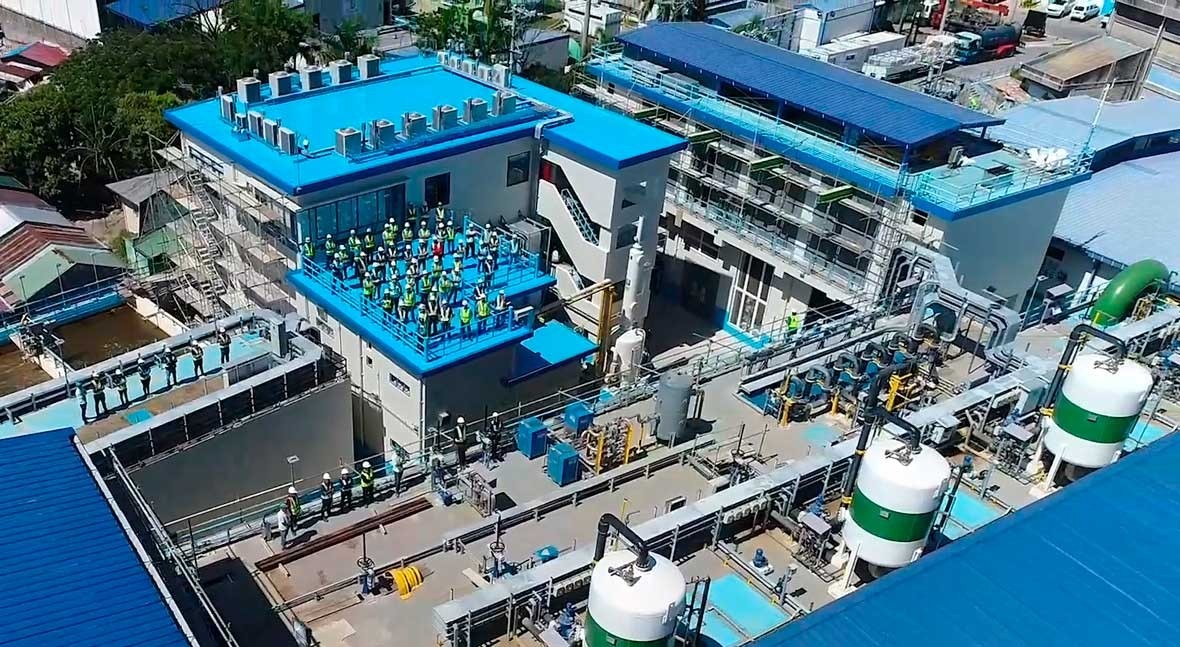While the concept of a digital twin has been around since 2002, it is only thanks to Building Information Modeling and the Internet of Things (IoT) that it has become cost-effective to implement. A digital twin is a full virtual model of a process, product, or service. This pairing of the virtual and physical worlds allows analysis of data and monitoring of systems to head off problems before they even occur, prevent downtime, develop new opportunities and even plan for the future by using simulations.
We have leveraged all the innovation processes done by ACCIONA and have implemented a digital twin in our SWRO desalination plant in Al-Khobar 1, Saudi Arabia, one of the largest in the country (210,000 m³/day). Among its advantages are the remote management of the plant to analyze and optimize productivity and avoid failures before start-up.
The development of a digital twin has two main elements:
- One related to the engineering design with regard to BIM systems, which work directly to create objects that provide valuable information and a collaborative platform for the entire project.
- The other one is related to the control system based on the most advanced sensors and instrumentation able to capture in real-time all the functionalities of the system to check the plant’s response at any time. It combines technologies such as virtual reality, augmented reality, IoT or Machine Learning.
Creating a digital twin is complex and requires the integration of different disciplines. Thanks to our joint work with Siemens, we have used SIMIT software, which allows real-time simulations ranging from devices in the field to processes in a water treatment plant.
This creates a collaborative environment to carry out a virtual start-up and to have a safe and secure training station for operators.
Leveraging all the innovation processes by ACCIONA, we have implemented a digital twin in our SWRO desalination plant in Al-Khobar 1
It also allows the comparison of the data created in the digital twin with those contained in the control system. This facilitates the validation of operations, as well as the optimization of operational possibilities.
The digital twin is integrated into ACCIONA’s Water Control Centre (CECOA) with the same standards of cybersecurity and communications channel availability as those applied with other plants. This means fast and flexible access to all functionalities.
Digital systems integration
When we talk about digitization, we must abstract a little bit of what can come thanks to the speed of change of technology.
I believe that AI has a lot of potential within desalination. Processes can be supported by systems that convert the operating year’s data into value information to generate intelligent models. Machine Learning, Deep Learning and uses of neural networks and big data will generate improvements that will interact with the control systems.
I would also add other technologies already present in many projects. BIM, using digital twins to analyze, check and draw conclusions in the design phase, and of course connectivity technologies. I also consider that 5G can be disruptive in this and many sectors, but we must wait for a little to face it in closed systems such as industrial desalination-type production facilities. Vocal assistants or IIoT (Industrial Internet of Things) are other technologies that will revolutionize the water market.
In desalination, there is much that can be done concerning the use of technologies such as nanotechnology and biotechnology in processes.
I also see indications of the use of robots or intelligent autonomous systems to develop repetitive, check-up or inspection tasks in industrial environments and hazardous areas.
Keeping all of this in mind, we cannot forget that people are those who can implement and hinder a process of digitization. The main obstacle to saving is the fear of change.
We need to beat the fear of connectivity with technology and good practices. Now, in many of the new projects and many of those in operation, cybersecurity is a priority at all levels.




